It’s been some time since we did once of these, and we thought it fitting to return to an old topic: how to handle large file sets for your small business. The last time we talked about Crashplan, I recommended against using their business version because, at the time, it was geared towards enterprise users.
The makers of Crashplan, Code 42, recently released their solution to small business edition, and revamped their business naming so that Crashplan PRO indicates small business, while Crashplan PROe is for the enterprise.
Normally for a new product, we like to do a full product review. However after looking through it, Crashplan PRO is really not much different from Crashplan+, the home user edition. So what do you get over Crashplan+? The biggest deal is indivdual user accounts for the employees of the company. This means that Employee A can’t restore / see files from Employee B’s machine. This can be prevented on Crashplan+ by password-protecting a Crashplan+ install, but that means the user can’t manage their own backups.
The other major bonus is in the pricing. Crashplan PRO can be purchased either as a per device plan with unlimited space for each, or as a common storage pool with unlimited devices accessing it. Currently the website allows for up to 4 TB for the common storage pool, and you can contact the sales team if you require more.
The per device unlimited storage plan is $7.49 per machine on a monthly basis, with no option to pay annually. The storage pool option is on a sliding scale that works out to roughly $0.28/GB per month. That number drops if you buy into a one or two year contract.
Comparing to the existing products plants Crashplan PRO right in the middle. It’s more expensinve than Crashplan+, which will run you $120/year for 10 machines (for the family unlimited plan). However it’s significantly less expensive than Crashplan PROe, which has hardware requirements in addition to buying software license packs. Crashplan PROe also has no unlimited option available.
As of right now, Crashplan PRO is missing a distinct feature from the two other variants: file seeding. This is one of the major reasons to go with Crashplan+ and PROe, because large file sets can be seeded to the cloud by sending a hard drive to Code 42 to preload. Hopefully this changes, as our large file set requirement almost dictates it as a requirement.
Other than the noted changes, Crashplan PRO functions exactly the same as Crashplan+. The client install in fact uses the same design, which is a good thing. I’ve included a small gallery where you can see some screen shots for the client software, along with pictures of the web portal. The web portal is significantly expanded upon from the regular Crashplan+ portal to handle user management and sending of invitations.
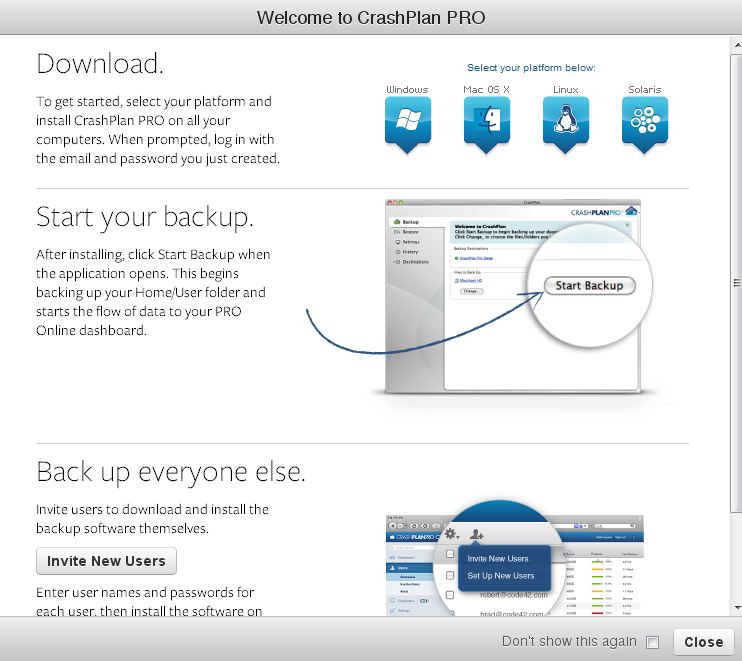
Splash screen for the Crashplan PRO client
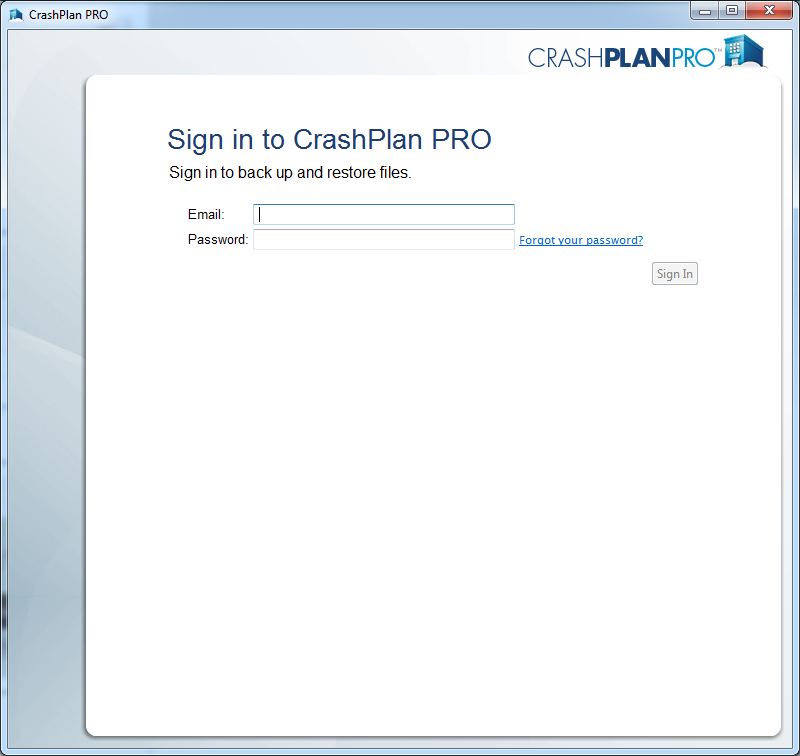
Crashplan PRO client login screen

Status screen showing a backup in progress
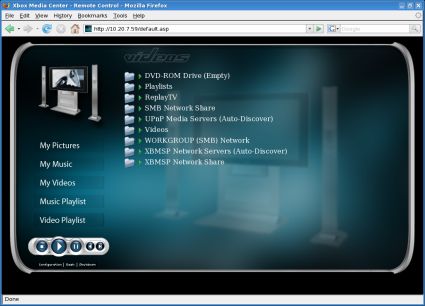
View of the Crashplan PRO web portal dashboard
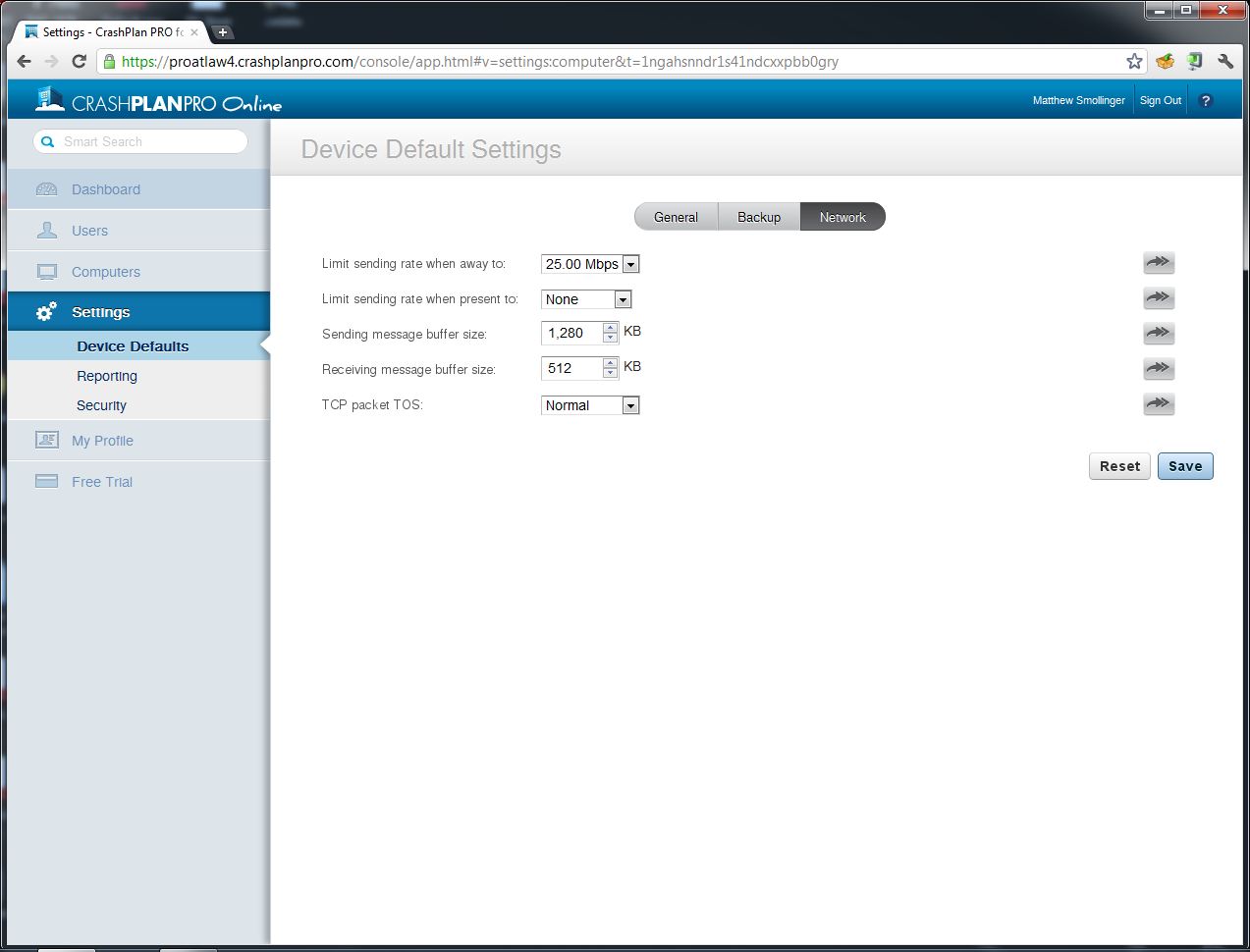
Default settings in the web portal
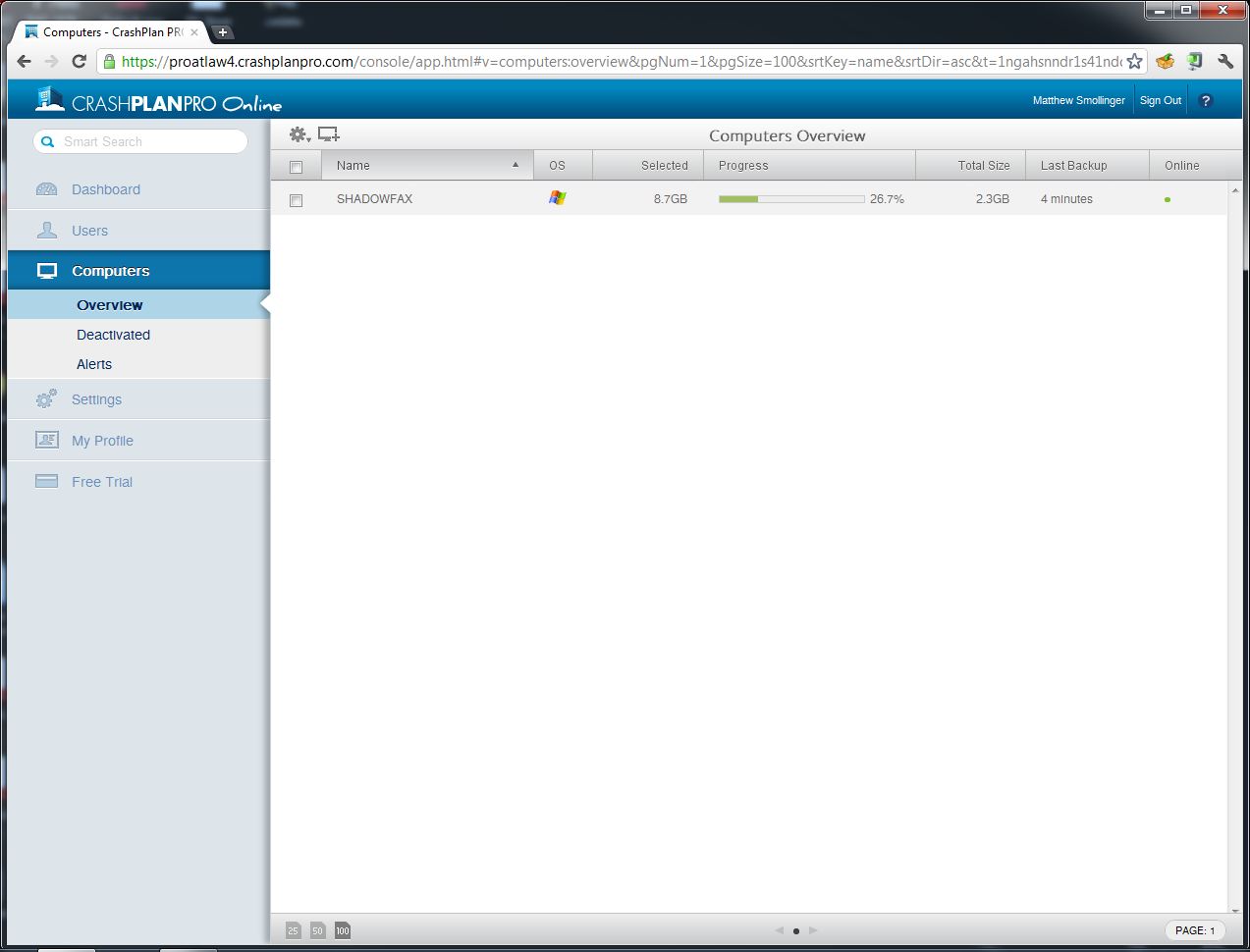
List of Crashplan PRO clients
The portal includes features for alerts when a certain computer goes over their storage allotment, in-depth user management, and several nice graphs to show how space is being used amongst the userbase. The website is also the only other means to restore files from a crashed computer. This is because the seeding service is also the method to retrieve files from the cloud en masse.
In my particular case, my client uploads very large files, normally hundreds of Gigabytes in size. This makes upload speed an important attribute. Crashplan PRO is significantly faster than Crashplan+, averaging close to 8 Mbps on my 25 / 25 Mbps internet connection. My test backup set of 8.7 GB took approximately 4 hours to complete.
My client currently has nine computers synced into her pre-existing Crashplan+ system. This means if she decides to grow beyond 1 more employee, she won’t be able to backup any additional machines. This alone presents a technical reason to switch to Crashplan PRO. However, the switch is not going to be easy or quick.
Due to technical limitations, users currently using Crashplan+ can’t upgrade their accounts to Crashplan PRO products. If you want to switch, the recommended process is to sign up for a 30-day trial, and begin uploading all your files again (!) while holding onto your Crashplan+ subscription. Once the file upload completes, you can then cancel your Crashplan+ account and sign up for PRO.
The waiting on file upload part is the kicker. Even at 8.5 Mbps, my client currently backs up in excess of 3 TB of data. If Crashplan averages 8 Mbps (I saw it drop as low as 3 Mbps), that is approximately 35 days to backup 3 TB of data, assuming all the machines are online and accessible at the same time. Without the seeding service, this presents a challenge to anyone with a large backup set.
So, the ultimate question: would I recommend this to my client? The answer is ultimately yes, but with caveats. Crashplan PRO provides a nice solution to the problem of having more than 10 machines connected. While it is more expensive, Crashplan PRO is the correct solution as it has features than will make management easier for a business user.
However, the lack of a seeding service for both backup and retrieval of large storage sets presents a real problem. Without that, you are reliant upon having a speedy internet connection to handle restoration. Unfortunately this wouldn’t be acceptable for many disaster recovery plans for small-to-medium sized businesses. Being able to access backups without access to the Internet is a must for many businesses, especially in areas where bandwidth is expensive.
Overall Crashplan PRO is the solution that Code 42 should have been offering when they changed the licensing model of Crashplan+. It satisfies the small-to-medium business segment, and provides management features that will make users and sysadmins happy. I will be entering into a dialogue with my client to see what her current situation is, and be advising her towards upgrading her existing plan so that the system will be able to grow as she does.
